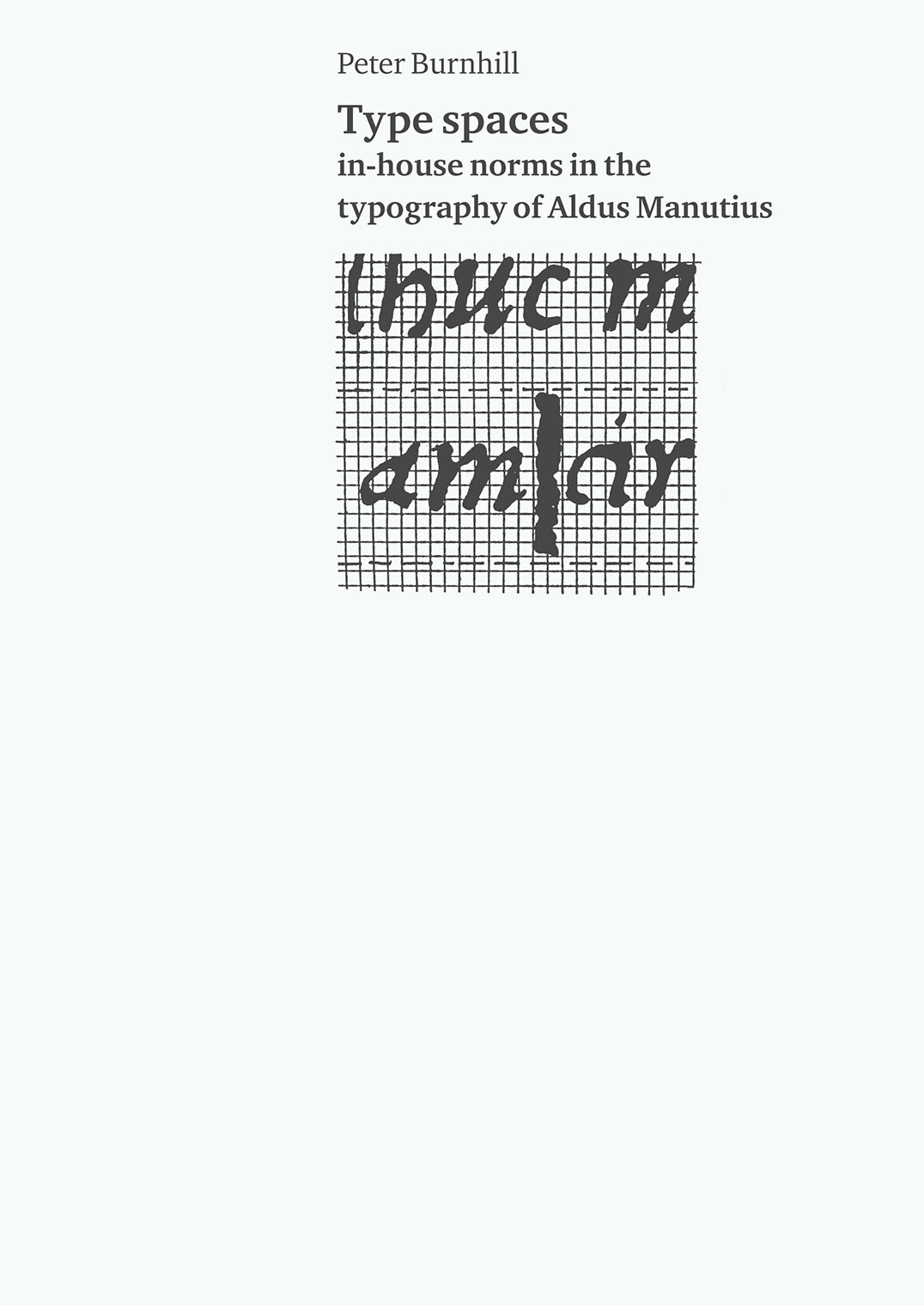The books of Aldus Manutius possess an enduring appeal, for their sense of order and visual-semantic structure. After intensive examination of some Aldine books, Burnhill proposes a hypothesis about the co-ordination of the dimensions in type in this printing. It seems that a system of typographic measurement informed this work, two hundred years before such a system was made explicit in printing.
This book, first published in 2003, has been out of print for several years. We are now making it available again as a pdf file (15 MB), free to download. Proceed through the purchasing process, and you will then receive an email that gives you a link with which you can download the ‘Type spaces’ pdf file.
Contents
Introduction
Primary sources used in this enquiry
Note on methods of measurement
Typographic norms
Aldine in-house norms
Design analysis:
- Lascaris’s Erotemata and the octavo classics
- Aldine character sets: relative proportions
- Typographic reference grids
The mould
Coda
Supplements:
- Positioning for meaning
- Anthony Froshaug’s homage to Aldus
- Ernest Hoch & Maurice Goldring, ‘Type size’
Bibliography
Index
Postscript [ 2019 ]
Synopsis
How is type to be measured? This innocent question has bedevilled the activity of making typefaces and setting characters to make lines of text. In the days of industrialized metal typography, we thought we had some clear answers. But now that type has no material form, those apparent certainties have gone.
In a work of fresh investigation, Peter Burnhill takes a very close look at some books of the early sixteenth century, and comes up with the surprising suggestion that this printing shows a unified system of dimensions: of character size, of line-increment, of line length, and of text area. He argues that there was a moment when the exceptional figures of the publisher Aldus Manutius and his punchcutter, Francesco Griffo, could use a set of ‘in-house norms’. The evidence is presented in a set of annotated enlargements of pages from Aldine books. This system of unified measurement has a rationality that can apply to any process of character assembly, in any age, and with any system of production.
Reviews
One hopes for Burnhill’s book that it unfolds its stimulating effects beyond the narrow circle of the historically interested – and into the world of book design. That its own production (paper, binding, page construction) need not be shy of the comparison with subject discussed is not the least praise that one can offer. It is a nice instance of the fact that writing on typography is always an exercise in self-reflection. The crystalline clarity that one encounters in Aldine production finds itself again in Burnhill’s reconstruction.
Roland Reuß, Text, no. 9, 2004










